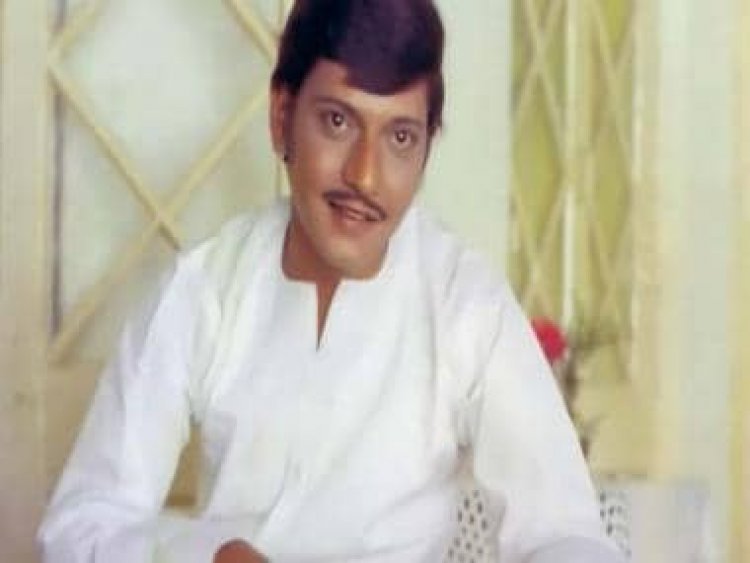Amol Palekar: The boy-next-door turns 78
Amol Palekar: The boy-next-door turns 78

There is something supremely ordinary about Amol Palekar’s personality. He is that neighbour whom you would expect to help when your sink starts to leak suddenly. The boy next door roles came to Amol almost by right.
When Basu Chatterjee’s Rajnigandha released in 1974, Amol was very active in experimental theatre. The film brought a new kind of hero to Hindi cinema. It also kickstarted Amol’s film career. Amol continued his work on stage, something that was equally exciting and challenging.
The success of Rajnigandha came as a shock to Amol. The film lay in the cans for two years after completion. Producer Suresh Jindal and director Basu Chatterjee were desperate to sell the film to distributors. Rajnigandha was a complete departure from conventional cinema. Amol and the team were anxious about how the audience would react. The first show was at Akashvani theatre in Mumbai. Akashvani theatre was a dependable outlet for parallel cinema in those days. Anybody who wanted to see an offbeat film or a niche venture would go to Akashvani. Amol was at the Rajnigandha screening at Akashvani with Basu Chatterjee, leading lady Vidya Sinha, producer Suresh Jindal and cameraman KK Mahajan.
Amol Palekar and Utpal Duttpic.twitter.com/pP0cfzIvp2
— Film History Pics (@FilmHistoryPic) November 20, 2022
After Rajnigandha, Amol turned down nine out of ten movie offers that came to him. He didn’t want to play the boy next door over and over again. He acquired the reputation of being fastidious and over-picky. In fact, after playing the boy next door, when he finally chose to play a grey character in Shyam Benegal’s Bhumika, the film industry was shocked. Then again, he chose to get out of bush shirts and pants to play a tycoon in slick jackets in Esmayeel Shroff’s Agar.
His entire endeavour was to shed the boy next door tag that Rajnigandha put on him. However, the label of the working class hero stuck to Amol. In Basu Chatterjee’s Chhoti Si Baat, Amol Palekar’s gawky gauche and altogether imbalanced character Arun is discernibly inexperienced in matters of love and sex. The guy’s body language is a dead giveaway. The premise for pursuing (read: stalking) the part if somewhat vacuous Prabha (Vidya Sinha) seems pretty shady: she simply seems to be the first pretty girl Arun spots. If the work still preserves a native charm it’s because Amol pursues Vidya Sinha with a sincerity of purpose where a ‘no’ is clearly a no-no for the girl being chased at bus-stops in buses and anywhere that a bus can take the lonely commuter of Mumbai.
Love was harder to find during those days. And therefore far more genuine and durable when found. I am sure Arun and Prabha are happily married with two children a boy and a girl, living outside Mumbai, maybe in Pune, since Mumbai is now too polluted for their delicate sensibilities.
Amol Palekar was always the man on the street who pays for a movie ticket and watches stars romance on another in style. He cannot be one of them. He is one of us. He holds a clerical job in an office, travels by bus, eats at low-end restaurants, dreams of love and chases the first girl whom he fancies.This is not what filmy heroes are made of.
In his best-known working-class comedy Gol Maal, Amol Palekar handled the complexities of the comedy of errors with an élan eschewing over-statement. He was Ramprasad a closet- musician struggling to find a 9-5 job in the tumultuous post-Emergency Mumbai of the 1970s. Enter the disciplinarian Bhawani Shankar (Utpal Dutt) who has a job, but also an autocratic attitude to anything that’s frivolous or fun-filled. To Bhawani Shankar, any young man who has shaved off his moustache is not serious about life. In a fit of desperation Ram pastes a mouche on his upper lip, puts on a Kurta borrowed from Asrani’s wardrobe and poses as the sedate god-fearing regimented office junkie.
In Gol Maal, Amol Palekar’s relationships are defined purely by his interaction with Utpal Dutt. The two are inseparable in their interactive energy. And it’s hard to imagine the film without Utpal bossing over the timid Amol in a way that would in today’s workspace be defined as harassment. Both Utpal and Amol shared a very special rapport with Hrishida. They both did five films each with the director. But none was as successful as Gol Maal.
Looking back at Amol Palekar’s career in Hindi cinema it is easy to slot him as the actor who made the hero accessible and reachable. Amol was one of us. Never larger than life, he represented middle-class aspirations of the 1970s, the 10-to-5 bloke who dreamt of owning his own Fiat car one day and spotting Amitabh Bachchan shooting on Juhu beach.
Subhash K Jha is a Patna-based film critic who has been writing about Bollywood for long enough to know the industry inside out. He tweets at @SubhashK_Jha.
Read all the Latest News, Trending News, Cricket News, Bollywood News, India News and Entertainment News here. Follow us on Facebook, Twitter and Instagram.
What's Your Reaction?
























































